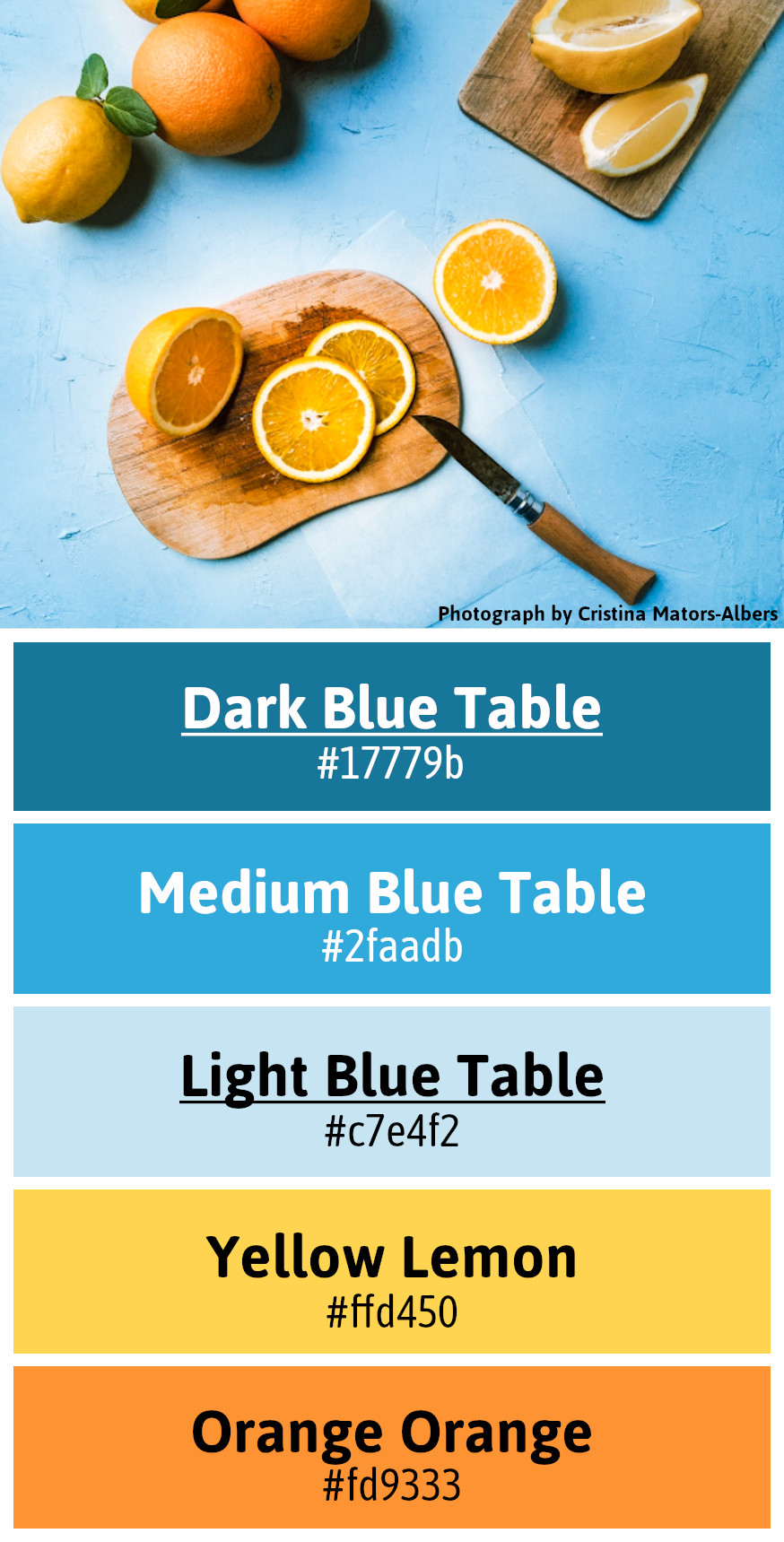All businesses have a brand. Your brand is how people remember your business. It includes the images and colours they associate with it. We can optimise those colours by creating and using a consistent colour palette. It is one of the fundamental parts of all effective brand guidelines. I recommend every business to have a colour palette they can use as reference throughout their marketing endeavours!
1. Why is it important to have a colour palette for your business?
When your business's whole online presence show the same set of colours, your audience will start to associate your business with those colours. It will have three effects.
1.1. Emotion
Colours transmit emotions. Do not believe it? Think of the brightest yellow. Now think of the darkest black. Did those two thoughts feel the same? They do not feel the same to me. So, when choosing the colour palette for a business we need to consider the emotions that each colour make our audience feel and choose the right ones for our brand.
1.2. Consistency
Show your business is trustworthy through the consistency of its online presence. Making use of the same colours over and over again is one of the best ways in which you can create a consistent online presence. Use your colours on your website, on your social media posts, and on everything else you share with your customers/clients!
1.3. Clarity
With the familiarity of knowing your business's colours, your audience will start to expect them and identify your social media posts as yours instantly. With time, their brain will not have to process those colours as much any more and can pay attention to the underlying message more easily.
2. How to create a colour palette for your business?
When you hire someone to create your brand guidelines, they will help you create a colour palette for your business. But even then you will need to have a basic understanding of what it takes to create a colour palette to be able to contribute to the process.
2.1. Overhaul your existing colours
Before you start looking for new colours, spend some time identifying the colours your business is already associated with. Consider:
- The colours of your logo
- The predominant colours on your website
- The predominant colours on your social media pages
- The predominant colours on your traditional marketing material (e.g. pamphlets)
- The colours of your products, their labels, and their packaging
- The colours of your physical spaces (e.g. store, office, clothing)
You may find that a few colours are used over and over again. Write down those and any others you really like. You may consider adding them to your final colour palette later on.
2.2. Think about colours that transmit the right emotions
Depending on your brand, you may want your business's online presence to transmit certain emotions (e.g. calm, happiness, lust, passion, trust). Whatever it is you are trying to transmit, colours can help you do it.
You can find plenty of guides about the emotional meanings of colours online. While they are a great place to start, they are not infallible. There is a balance between how similar and different we are. So, I advise you to always take a step back and find out what each colour really makes you and your target audience feel.
Here is a succinct list of emotions that are associated with some basic colours and that they make me personally feel as well:
- Black: strength
- Blue: confidence, peace, trust
- Brown: nature, neutrality, security
- Green: growth, health, nature
- Grey: consistency
- Orange: energy, warmth
- Pink: relaxation, sensitivity
- Purple: lust
- Red: lust, passion
- White: clarity, cleanliness, peace
- Yellow: friendliness, happiness, optimism
But light and dark greens may bring out different emotions. And then there are colours that sit between these basic colours (e.g. amber, aqua, coral, lavender, maroon). Just find a colour, figure out how it makes you feel, ask others what it makes them feel, and then see if those emotions are suitable for the brand you are building.

2.3. Find your colours
My advice for someone who is just starting to discover this world of endless colours is to search for images that have colours you are looking for and to find the reference to those colours using a tool like GIMP.
There are also easy-to-use tools to find similar colours to the ones you already have, like Color Hex. These are very useful for when you find the right tone of a colour but want it lighter or darker.
2.4. Make sure to have all the colours you need
There are at least three colours in a colour palette for a business: dark colour, light colour, and pop colour. As long as your palette has those three, it can work. But of course people often choose some additional colours. My first colour palette had five colours but I only used four of them regularly: one dark colour, one light colour, and two pop colours.
Having both dark and light colours is essential for font accessibility. There needs to be a big contrast between your text and your background. So make sure you are covered. Black and white are viable options!
If you want to be remembered by your colours, choose at least one pop colour to go with your neutral ones. Alexandra Pedro Marketing's pop colours are yellow and orange. I chose these because they bring me joy and I want my online presence to be a positive influence on my audience.
2.5. Ask for feedback
Once you have a colour palette, it is time to put it to the test. This is essential to make sure you are not giving the wrong impression with the colour palette you choose.
Share it with your family and friends without any preface and ask them what its colours make them feel. It is best when you ask several people. A larger sample will give you a better understanding of the emotions mostly commonly associated with each colour.
After asking your family and friends, share your colour palette with your target audience. Post a social media post with your new colours and ask your audience what they think.
If your colour palette passes these two tests, it is time to implement it more widely!
3. How to use your business's colours?
Now that you have a colour palette for your business, put it in action. It is easier to do this when starting from scratch but you can also replace colours you already have in place as needed.
Even multinational companies change their colours slightly from time to time. Do not be afraid to do it. Your existing audience will notice the difference at first but they will soon start associating your business with its new colours.
Once you have your colour palette implemented it is just about maintaining it. Do not forget to share your colour palette with your collaborators (e.g. social media content creators) to make sure the right colours are always present.
Something to have in mind is that your colour palette may evolve over time. You might, like I, find that you do not make good use of one of your colours and remove or replace it. Or you can choose to rebrand your business slightly at regular intervals or after major shifts in its offerings. Just refrain from drastic changes once you have an established colour palette that your audience's recognises as yours.
3.1. Use your colours on your logo
If you already have a satisfying logo, ask the person who created it to adapt its colours to suit your new ones. If that is not possible, consider going for a logo with neutral colours that complement your new palette. If that is not possible either, maybe it is time to consider a new logo! As I said before, people will notice at first but they will get over it soon.
3.2. Use your colours on your website
Your website copy will do most of the talking but consider helping its message get across with your new and improved colour palette. In addition to changing your logo, that presumably appears on every page of your website, consider also changing the font colours, the background colours, and the colours of your images and photos.
3.3. Use your colours on your social media posts
Select photographs that go with your colour palette. And if you write on top of them, only use colours from your palette or neutral colours. When creating your own templates for social media from scratch, make sure to use your colours as well.
You can also showcase your colours through the emojis you use. I, for example, make extensive use of the sun emoji, the shooting star emoji, and the yellow heart emoji.
3.4. Use your colours on your products
I am going to focus on examples related to products now but this tip also applies to any materials and tools associated with the provision of services.
Labelling and packaging are two major areas to consider. Especially in these times when many people order products online, the whole experience of opening your package must be considered and optimised to create the right association with your brand.
But here is another thing to consider: for your products to be perceived as environmentally-friendly the raw colours of their materials will work best than any others you might add on top. Remember the environmental cost of plastic and many colourings.
3.5. Use your colours on your space
Using your colour palette on your store or office does not mean it needs to have brightly-coloured walls! That might work well but you can also effectively use a colour palette in a space by combining neutral colours with small pops of colour here and there.
Using colours in your physical space also includes clothing. If you have employees, you can ask them to wear your colours when they work for your business, especially when they are in contact with your customers/clients or posing for photographs or videos with marketing purposes.
And since we are talking about photographs and videos, make sure the colours of your backgrounds and props also match your palette. It is about showcasing your colours everywhere!

